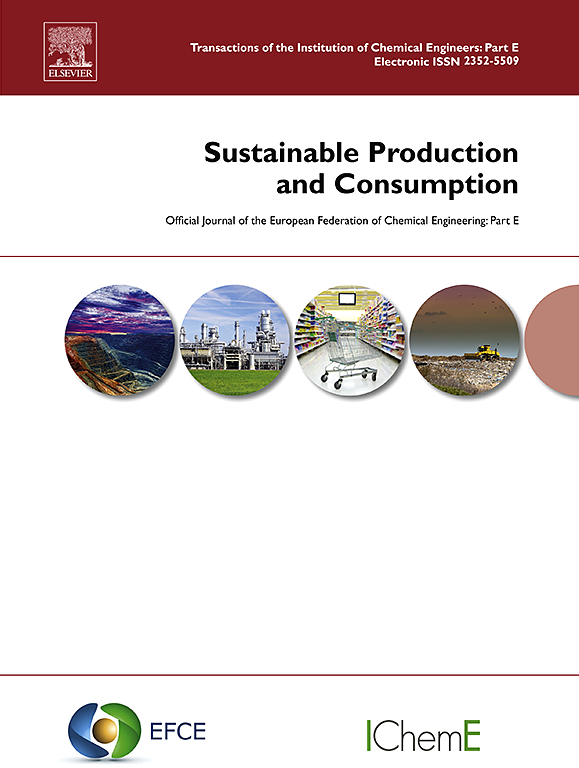Transitioning the silk industry towards circularity: A thematic analysis of sustainable value chain practices
IF 10.9
1区 环境科学与生态学
Q1 ENVIRONMENTAL STUDIES
引用次数: 0
Abstract
The demand for natural fibers, including silk, is steadily rising, yet research on transitioning the silk industry from a traditional linear model to a circular economy still needs to grow. This study addresses this gap by outlining areas of interest to support silk companies in applying circular practices to achieve sustainability. To this end, ten semi-structured interviews with silk industry experts were carried out, and a thematic analysis was conducted, integrating findings from the extant literature to enhance the depth and contextualization of the results. Six critical themes emerged: waste utilization, circular approaches, consumer education, technology advancement, traceability and transparency, and governmental regulations. The findings reveal that production waste, such as mulberry branches, silkworm litter, low-grade cocoons, and sericin, can be repurposed into fertilizers, animal feed, cosmetics, and textiles, offering both environmental and economic benefits. Circular practices like designing for product longevity, minimizing chemical usage, reusing silk garments, and promoting recycling are key to achieving resource optimization and waste reduction. Technology advancements, including artificial intelligence and blockchain, enhance efficiency and ensure traceability and transparency, fostering stakeholder trust. Consumer education is also vital for creating awareness regarding sustainable practices. Additionally, government policies play a transformative role by supporting training programs, incentivizing innovation, and driving circularity within the industry. This study proposed a theoretical framework that offers actionable insights to industry practitioners, researchers, and policymakers for embedding circularity throughout the silk industry, contributing to global Sustainable Development Goals (SDGs), particularly responsible consumption and production. Future research should explore barriers to attaining circularity and use mixed methodologies to accelerate the silk industry's transition to a circular economy.
丝绸产业向循环转型:可持续价值链实践的专题分析
对包括丝绸在内的天然纤维的需求正在稳步上升,但丝绸产业从传统的线性模式向循环经济转型的研究仍需增加。本研究通过概述支持丝绸公司应用循环实践以实现可持续性的兴趣领域来解决这一差距。为此,我们对丝绸行业专家进行了10次半结构化访谈,并进行了专题分析,整合了现有文献的发现,以增强结果的深度和语境化。出现了六个关键主题:废物利用、循环方法、消费者教育、技术进步、可追溯性和透明度以及政府法规。研究结果表明,生产废弃物,如桑枝、蚕窝、低级茧和丝胶,可以重新利用为肥料、动物饲料、化妆品和纺织品,具有环境和经济效益。循环实践,如设计产品寿命,尽量减少化学品的使用,重复使用丝绸服装,促进回收是实现资源优化和减少废物的关键。包括人工智能和区块链在内的技术进步提高了效率,确保了可追溯性和透明度,促进了利益相关者的信任。消费者教育对于提高对可持续做法的认识也至关重要。此外,政府政策通过支持培训项目、激励创新和推动行业循环发挥着变革性作用。本研究提出了一个理论框架,为行业从业者、研究人员和政策制定者提供可操作的见解,以在整个丝绸行业中嵌入循环,为全球可持续发展目标(sdg)做出贡献,特别是负责任的消费和生产。未来的研究应该探索实现循环的障碍,并使用混合方法来加速丝绸行业向循环经济的过渡。
本文章由计算机程序翻译,如有差异,请以英文原文为准。
求助全文
约1分钟内获得全文
求助全文
来源期刊

Sustainable Production and Consumption
Environmental Science-Environmental Engineering
CiteScore
17.40
自引率
7.40%
发文量
389
审稿时长
13 days
期刊介绍:
Sustainable production and consumption refers to the production and utilization of goods and services in a way that benefits society, is economically viable, and has minimal environmental impact throughout its entire lifespan. Our journal is dedicated to publishing top-notch interdisciplinary research and practical studies in this emerging field. We take a distinctive approach by examining the interplay between technology, consumption patterns, and policy to identify sustainable solutions for both production and consumption systems.
 求助内容:
求助内容: 应助结果提醒方式:
应助结果提醒方式:


